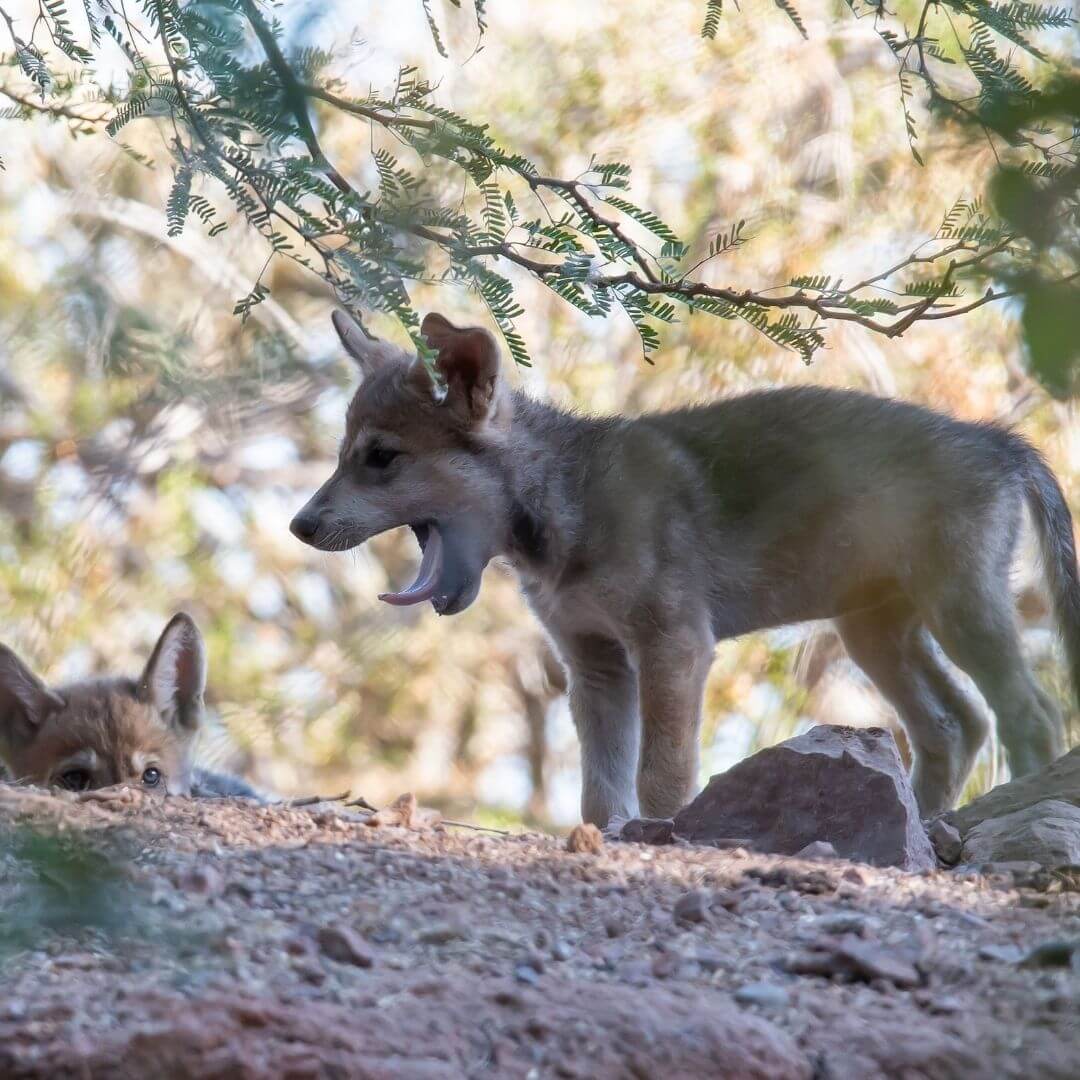Mexican Gray Wolf
Conservation Story
ALL PHOTO CREDIT: WILLIAM R. DRIVER
Arizona's Endangered Mexican Wolves
Arizona Game and Fish Department
Natural History
Not Your Average Wolf
- Mexican wolves, or Mexican gray wolves, are the smallest and most genetically distinct subspecies of gray wolf.
- While about 30 subspecies of gray wolves are found across North America, Europe, and Asia, the Mexican wolf is only found in the American Southwest and Mexico.
- Like most wolves, Mexican wolves usually live in packs with a dominant breeding pair and offspring from several litters.
- Their packs are smaller than other subspecies, usually around 4-8 wolves.
- They communicate through howling, growling, barking, and scent markings.
- Females will usually give birth to 2-6 pups in late spring in their den.
- Mexican wolves eat deer, elk, javelina , and will occasionally scavenge.
So, What's the Problem?
In the 1900s, human settlement expanded into the American Southwest and Mexican wolf habitat. As humans arrived, populations of Mexican wolves began facing problems.
1
Livestock
As settlers moved into the Southwest, they brought along their herds of livestock. Their large herds of cattle and other species required huge amounts of land for grazing, which damaged the ecosystem. The livestock overgrazed huge portions of land leaving little resources for the native herbivores and pushing them out of regions they were previously plentiful.
2
Prey Base Depletion
While the settlers did bring livestock and other resources with them, they also hunted the native deer and elk, further decreasing the food resources for the wolves. With their prey base heavily depleted, wolves turned to the livestock for an easy meal, enraging the settlers.
3
Retaliatory Hunting
As wolves found a new source of food in livestock, ranchers and others who depending on their livestock for food or to make a living fought back. While some took removing the wolves into their own hands through hunting, others used petitions and successfully pressured the US Biological Survey (now the USFWS) to hunt, trap, and poison predators in livestock regions.
Between 1915 and 1925, nearly 1,000 wolves were reportedly killed in Arizona and Ne w Mexico.
The last Mexican wolf in the US was killed in 1970.
A World Without Wolves
RECOVERY PROGRAM
Mexican Wolves Today
2019 Population Survey
Wild Wolf Boot Camp
Thinking Outside of the Box
Ongoing Conflict
Do Your Part for Wolves
Use Your Voice (Or Pen...)
Don't just tell your friends why wolves are important, tell policymakers. Call, email, or write to USFWS, AZGFD, & NMDGF to tell them you're with the wolves and you support the ESA and wolf conservation!
Responsible Hunting
Responsible hunting is important for all species of predators because it maintains their prey base and the landscape. Hunting at the appropriate time of year and in regulated locations ensures pregnant or nursing females are not hit and prey populations are not eradicated in entire regions.
Donations
Other than donating your time to reach out to policymakers, you can donate financially to the California Wolf Center, Lobos of the Southwest, or any of the 50+ zoos and other facilities with a Species Survival Plan for Mexican wolves.
ALL PHOTO CREDIT: WILLIAM R. DRIVER
Sign Up for our Newsletter
Stay up to date with new adventures, classes, deals, and more!
MENU
EDUCATIONAL RESOURCES
All Rights Reserved | Edzoocating.com





